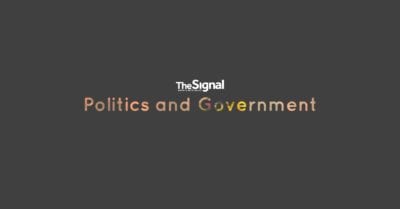With a single exception, I’ve been disconcerted by the recent series of hyperbolic, inaccurate, politicized and shockingly rude columns written in emotional responses to horrific mass murders. No doubt others in our community share this reaction as well.
Rather than rebut those less-than-intellectually-rigorous polemics in this column, I’ll address what isn’t being discussed, i.e., solutions to reduce gun violence that have proven efficacy.
In early 2001, the U.S. Department of Justice launched Project Safe Neighborhoods, a comprehensive multipoint project designed to reduce gun violence at the local level via a targeted combination of federal, state and local law enforcement action (www.ncjrs.gov/pdffiles1/nij/grants/226686.pdf).
The program was based on the Boston Ceasefire Project and Richmond’s Project Exile, utilizing a data driven approach to reduce root causation of gun violence.
“At the core of the strategy was the increased federal prosecution of illegal gun use and illegal gun possession by prohibited persons,” reads an excerpt from the executive summary. “Increased federal prosecution was intended to incapacitate chronic violent offenders as well as to communicate a credible deterrent threat to potential gun offenders.
“However, it was also recognized that exclusive reliance on increased federal prosecution was of limited utility given the reality that most gun crime is prosecuted in state and local courts. Further, there was recognition of the large variability across communities in the U.S. in terms of the level and nature of gun crime, and therefore the program would need flexibility to adapt to local context.
“To address these issues, PSN was framed on five key components: 1) partnerships; 2) strategic planning and research integration; 3) training; 4) outreach; and 5) accountability. The intent was that these components would maximize the investment of federal resources through a focus on the contexts driving gun crime in particular jurisdictions. Research would assist in focusing resources and local and state partners would bring understanding of local conditions as well as resources to the interventions. The goal was to significantly reduce gun crime.”
Was Project Safe Neighborhoods successful? According to the study report, these initial results were achieved:
“The next stage in the analysis compared PSN target cities with non-target cities by the level of federal prosecution (as a specific type of dosage). The findings revealed that PSN target cities in high federal prosecution districts experienced a 13.1 percent decline in violent crime. In stark contrast, non-target cities in low federal prosecution districts experienced an increase of 7.8 percent in violent crime.”
Unfortunately, despite promising outcomes and implementation of crime data analytics in a few major metropolitan police agencies, the methodology hasn’t been consistently applied as a national priority.
Recently, as part of a major DOJ initiative to address a spike in urban violence since 2014, Attorney General Jeff Sessions has announced a “reinvigoration” of Project Safe Neighborhoods.
Note that the focus of PSN is the proven effectiveness of prosecuting prohibited persons who illegally possess or utilize firearms in the commission of crimes.
In stark contrast, what hasn’t worked are attempts to regulate types of firearms, magazines and ammunition owned by law-abiding citizens. Despite assertions by gun control advocates, there’s been no proven correlation between the statistics of lawful firearm ownership and gun homicides.
I recommend readers review the referenced Project Safe Neighborhoods report with an open mind and come together as a community to “do something” in support of a proven methodology to reduce gun violence.
Ron Bischof is a Santa Clarita Valley resident.












